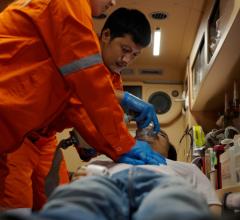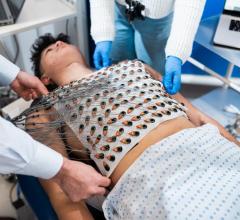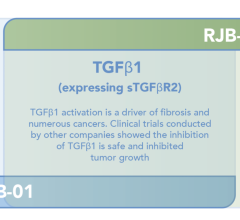
Getty Images
March 20, 2023 — University of Utah Health scientists have corrected abnormal heart rhythms in mice by restoring healthy levels of a protein that heart cells need to establish connections with one another. That protein, GJA1-20k, is underproduced in people with a genetic condition called arrhythmogenic cardiomyopathy, one of the leading causes of sudden cardiac arrest in athletes under the age of 35.
The finding, reported in the journal Circulation Research, suggests a new strategy for treating the abnormal heart rhythms caused by arrhythmogenic cardiomyopathy.
The results may also have implications for treating dangerous arrhythmias associated with more common conditions, such as those that can develop soon after a heart attack.
“This is really a new paradigm for the treatment of heart rhythm disorders,” says Joseph Palatinus, M.D., Ph.D., an investigator at the Nora Eccles Harrison Cardiovascular Research and Training Institute (CVRTI) and critical care cardiologist at Intermountain Healthcare. Palatinus is the first author of the study, which was led by U of U Health colleague Robin Shaw, M.D., Ph.D., director of the CVRTI.
An unusual pattern in patients
People with arrhythmogenic cardiomyopathy are born with normal hearts but begin to develop an irregular heartbeat in their 20s or 30s. These arrhythmias can raise the heart rate to dangerous levels and explain why some individuals with the condition experience sudden cardiac arrest during exercise.
Patients diagnosed with arrhythmogenic cardiomyopathy are advised to restrict exercise. They may also benefit from an implantable defibrillator to control their heartbeat. As the disease progresses, the heart muscle becomes fatty and fibrotic. This prevents the heart from pumping blood efficiently, and eventually patients need a heart transplant.
Palatinus, Shaw, and their colleagues studied heart tissue from patients with arrhythmogenic cardiomyopathy who underwent transplant and discovered a problem with a protein called Connexin 43. In healthy hearts, Connexin 43 forms channels between adjacent cells, facilitating communication. The diseased hearts made normal amounts of Connexin 43, but it wasn’t at the edges of cells where it belonged.
This, the team determined, was likely because there wasn’t enough of a trafficking protein, called GJA1-20ka. The researchers knew from previous experiments that without it, the heart’s cells wouldn’t be able to get Connexin 43 to the right place.
Fixing an abnormal heartbeat at the source
To determine if they could restore the heart’s normal rhythm, the scientists turned to mice that have similarities to people with arrhythmogenic cardiomyopathy. They both have low levels of GJA1-20k and develop arrhythmias. Palatinus and colleagues used low doses of gene therapy to bring the trafficking protein GJA1-20k back to normal levels. This, they confirmed, enabled heart muscle cells to transport Connexin 43 to its proper locations.
Most importantly, it gave the animals a more normal heartbeat. “The ease and low dose needed to fix the arrhythmias of even an inherited heart disease suggests that we have identified a critical pathway to stabilize cardiac electrical activity,” said Shaw.
Although arrhythmia improved, the animals still had heart scarring, a symptom from a different underlying condition. Palatinus noted that was actually an encouraging result. It suggests arrhythmia and heart scarring can occur independently and that it could be possible to treat abnormal heart rhythms even when the heart is severely scarred. “This is a new paradigm,” he says.
The treatment success in mice suggests that raising levels of GJA1-20k might restore normal heart rhythms in patients with arrhythmogenic cardiomyopathy, too. For patients, Palatinus says, it might be possible to deliver the therapeutic protein directly to the heart. Further research will be needed to develop the treatment for clinical use.
Disruptions in protein trafficking are thought to contribute to arrhythmias beyond those caused by arrhythmogenic cardiomyopathy, and Palatinus is optimistic that a similar treatment strategy might be useful for those conditions, too. If so, that could one day give patients and their doctors an alternative to the ion channel-blocking drugs currently used to treat many arrhythmias, which can slow the heart and even lead to new rhythm problems for some patients.
For more information: https://healthcare.utah.edu/
Related Sudden Cardiac Arrest Content:
Sudden Cardiac Arrest Foundation Urges Public Awareness and Action After Collapse of Damar Hamlin
Rising Star Footballers Among Young Athletes to Benefit From New Screening Tool
VIDEO: Should Student Athletes be Screened for Sudden Cardiac Arrest?
American Medical Society for Sports Medicine Position Statement Evaluates Role of ECG in Athletic Cardiovascular Screening
Cardiac Ultrasound Studies Evaluate Impact of Exercise on Athletes' Hearts
Tackling Cardiovascular Health Risks in College Football Players
Sudden Cardiac Arrest Patient Walks to Ambulance Thanks to Wearable Defibrillator


 January 30, 2024
January 30, 2024 








